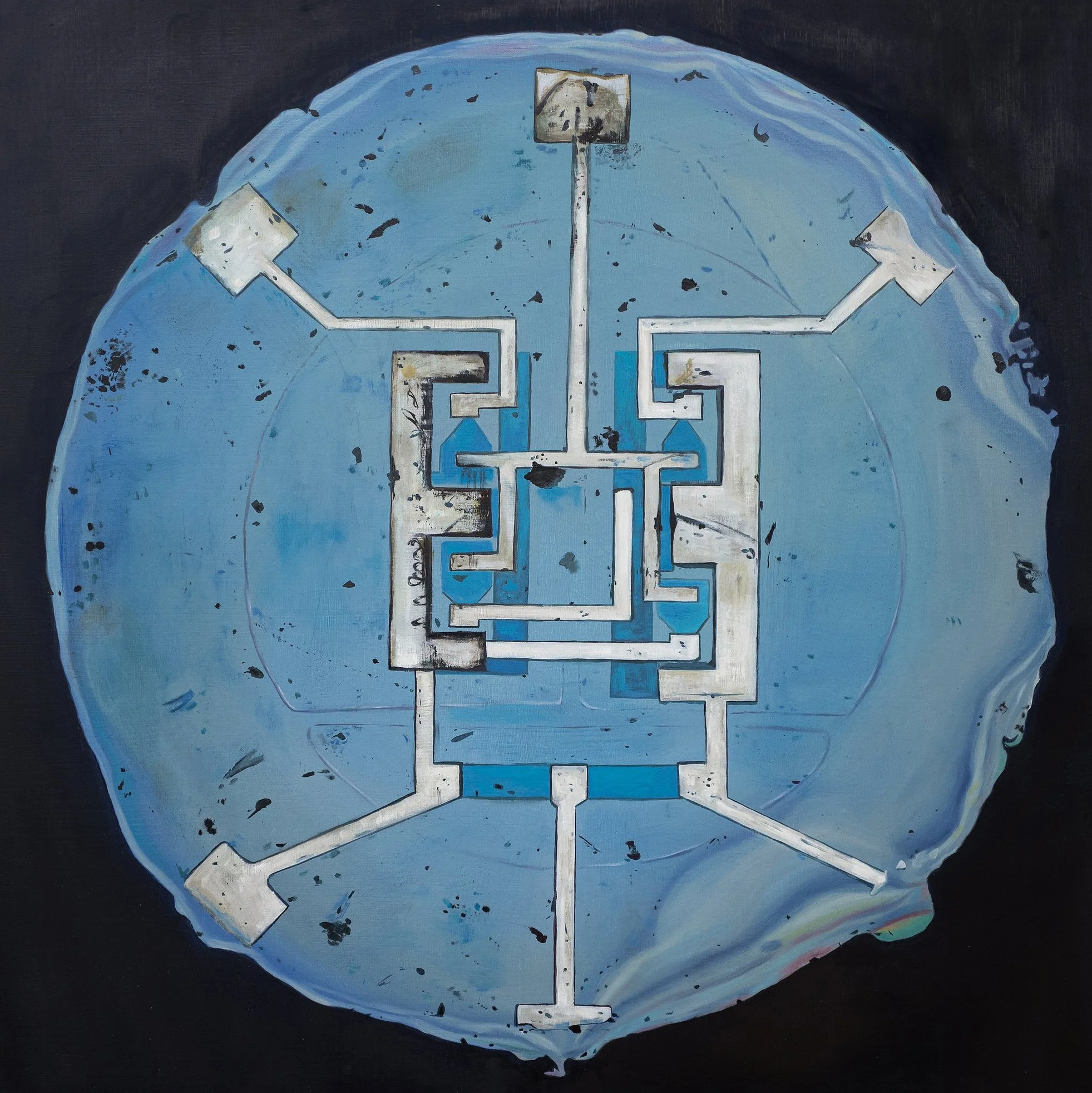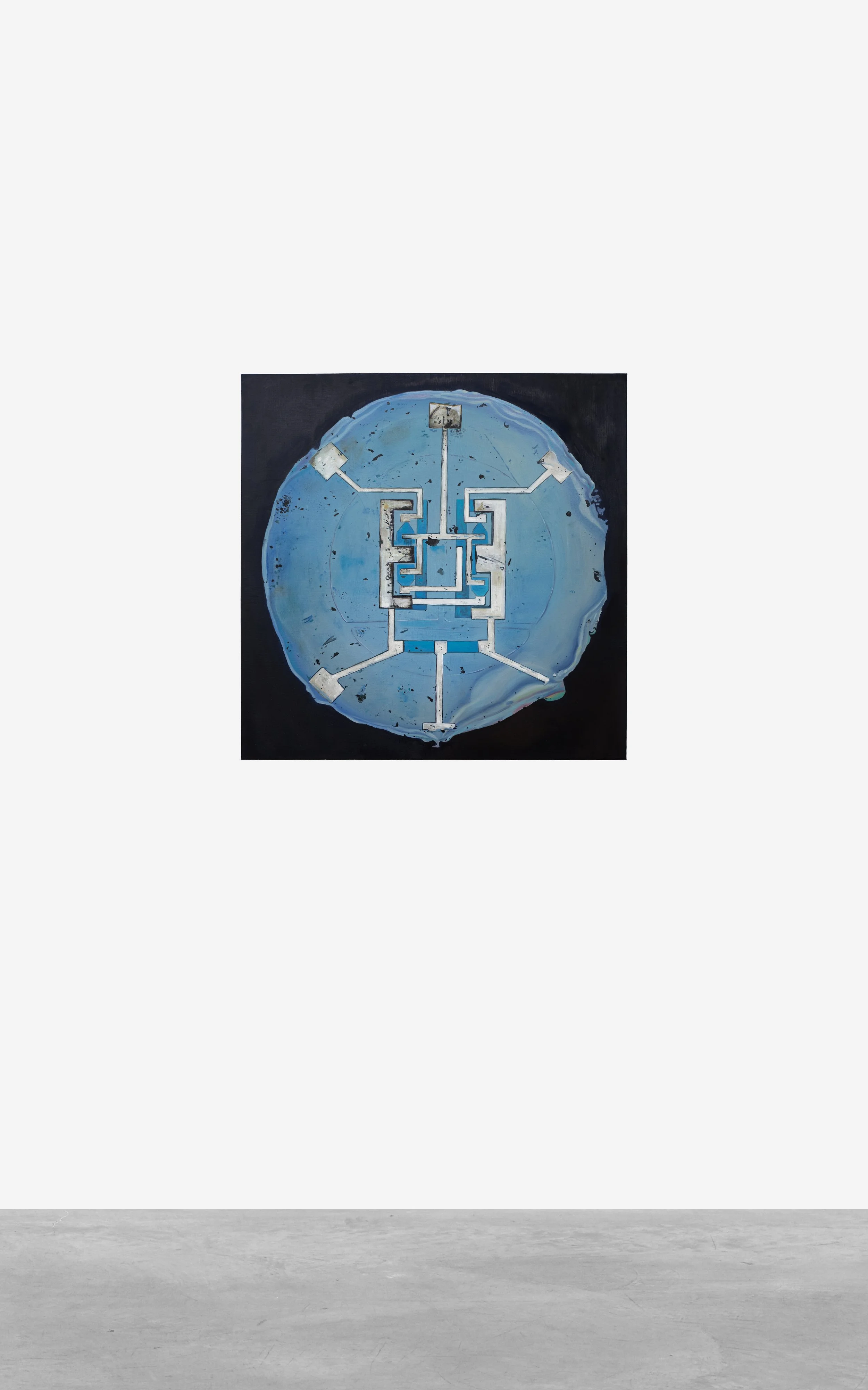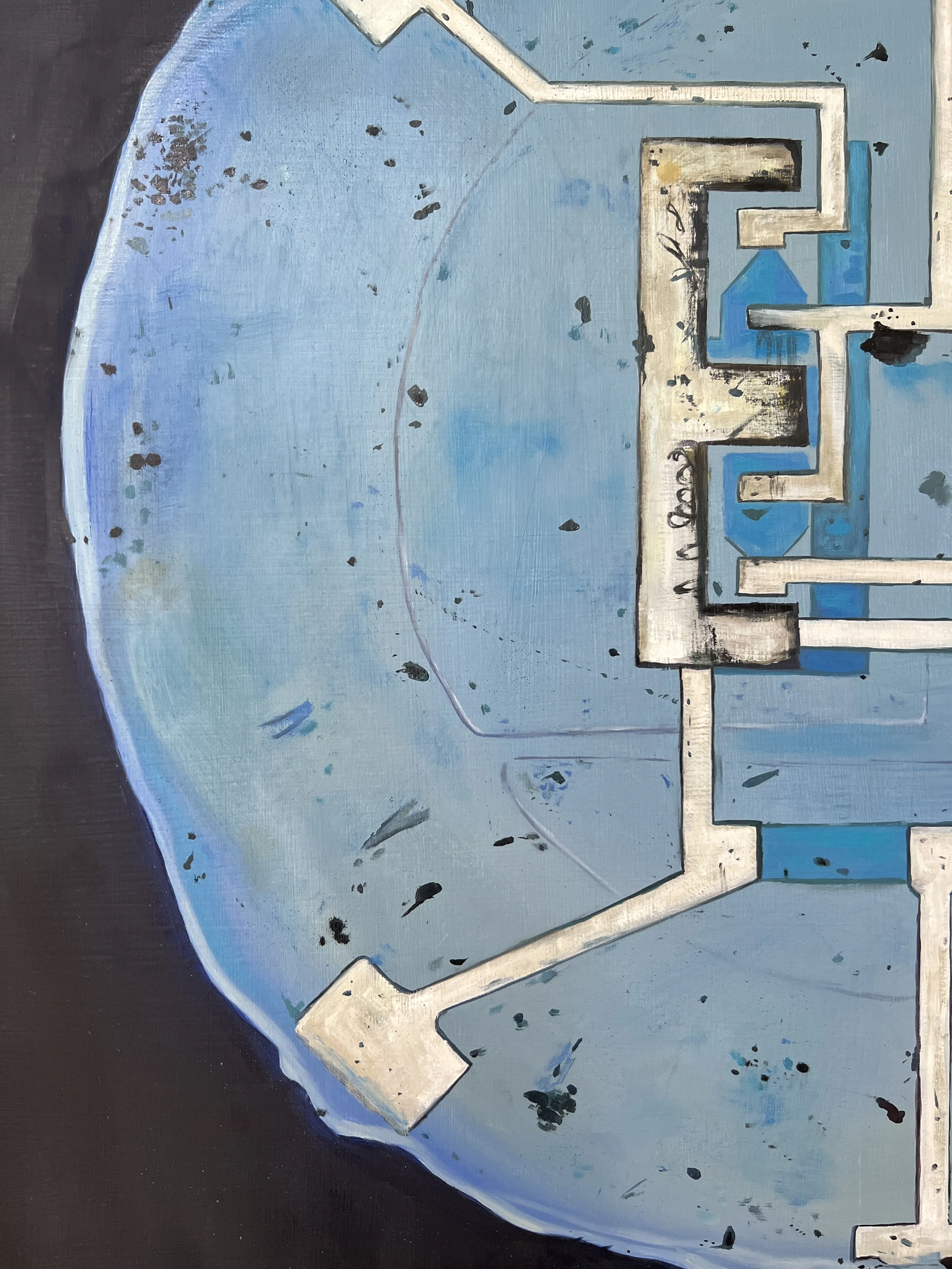Logic Circuit, 2022
Logic Circuit, 2022
Oil on linen
76 x 76 cm (36 x 36 in)
Digital computers operate on the simple principle of manipulating on and off signals to perform logic functions. Over time, various methods have been used to generate these signals, including mechanical devices, electromagnetic relays, vacuum tubes, transistors, and integrated circuits. In September 1960, Isy Haas and Lionel Kattner introduced the first production version of the Micrologic "F" element flip-flop planar IC. The advent of integrated circuits replaced transistors, significantly reducing the size of computers and marking an evolution that brought about dramatic improvements in speed, cost efficiency, and everyday usage.
Logic Circuit (2022) is a painting that captures this pivotal moment of technological breakthrough, paying tribute to a key milestone in the history of innovation. The composition centers around a circular form, with precise internal lines depicting the etched channels on the back of a silicon wafer, filled with non-conductive epoxy resin. The tension between order and irregularity enhances the visual appeal, creating an engaging experience. Through Logic Circuit, Tan Mu blends technological aesthetics with artistic expression, exploring the transformation of materials and technology, and their connection to humanity's progress.
Q: How does the physicality of precise lines and silicon wafer etching influence your representation of these materials in the artwork?
Tan Mu: The softened edges and darkened spots on worn and eroded chips evoke an organic quality, reminiscent of anatomical brain imagery. Through painting, my intention extends beyond documenting technological and material milestones; I strive to reveal the striking parallels between their physical properties and the intricate internal structures of our brains. For instance, in works like MRI (2021) and Synapse (2023), I explore how neurons form connections through synapses, akin to chips that transmit information via switches. My work underscores this shared essence, demonstrating how the physical patterns and characteristics of these materials echo the switching mechanisms inherent in both biological and technological systems. This connection emphasizes their pivotal roles in the processes of information transmission, programming, and memory, bridging the material and the cerebral in a unified narrative.
Q: The transformation of technology from bulky machines to small, efficient components has radically changed our lives. How has this evolution influenced the way we interact with technology?
Tan Mu: The evolution of technology is not just about smaller and more efficient components; it’s about the exponential growth of computational power. These advancements have not only enhanced efficiency but also accelerated humanity’s ability to achieve faster and stronger objectives. Just as our brains process signals through complex networks of synapses, technology mirrors this with data centers, fiber optics, and logic circuits. This continuous development of computational power drives human progress, enabling us to interact with technology in more intimate and seamless ways, reflecting the interconnectedness of biological and digital systems.
Q: Circular structures frequently appear in your work—from technological motifs like logic circuits and cross-sections of submarine cables to microscopic imagery such as neurons, embryos, and atoms. Do these forms share a deeper connection, or do they reflect a broader conceptual exploration in your practice?
Tan Mu: The circular structures in my work symbolize a kind of shared connectivity among the various systems I explore. They function both symbolically and practically, bridging the abstract with the tangible. The technological and biological elements I depict often share not only visual similarities but also underlying mechanisms and logics. I view technology as an extension of the body and an externalization of memory. Logic circuits and submarine cables, in a way, act as externalized “synapses”—they transmit and store information, carrying the weight of our collective consciousness.
At the same time, I have a deep interest in circular and topological forms themselves. In my work, these shapes resonate with Eastern philosophies, representing cycles of energy and continuous flow. On another level, they also reflect the fundamental patterns of cosmic energy and mathematical logic. Through this "field of energy," I sense the eternal and infinite dimensions of nature. This notion of “natural aesthetics” also manifests in contemporary devices and technologies. These systems become bridges between the visible (such as cables and circuits) and the invisible (like data and memory). Through these works, I aim to evoke a deeper resonance between human consciousness and technological evolution.





